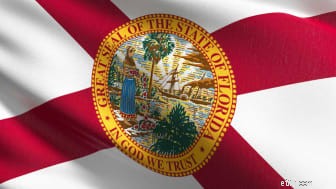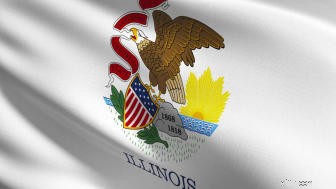
COVID-19 মহামারীর জন্য ধন্যবাদ, লক্ষ লক্ষ আমেরিকান মার্কিন বেকারত্বের ক্ষতিপূরণ ব্যবস্থায় একটি অবাঞ্ছিত ক্র্যাশ কোর্স পেয়েছে। প্রথমবারের মতো বেকারত্বের সুবিধা খুঁজছেন এমন লোকেদের কাছ থেকে অনেক সাধারণ প্রশ্ন রয়েছে৷ আমি কিভাবে সুবিধার জন্য আবেদন করব? কত পাব? সুবিধা কতদিন স্থায়ী হবে? মানুষের এখনই এই প্রশ্নের উত্তর দরকার। কিন্তু একবার আপনি পেমেন্ট পেতে শুরু করলে, আরেকটি প্রশ্ন মনে হতে পারে:আমাকে কি আমার বেকারত্বের সুবিধার উপর কর দিতে হবে?
যখন ফেডারেল আয় করের কথা আসে, তখন সাধারণ উত্তরটি হ্যাঁ। চাচা স্যাম বেকারত্বের সুবিধাগুলিকে কর দেন যেন তারা মজুরি (যদিও 2020 সালে প্রাপ্ত বেকারত্বের ক্ষতিপূরণের $10,200 পর্যন্ত ছাড় দেওয়া হয়েছে $150,000 এর নিচে সামঞ্জস্যপূর্ণ মোট আয়ের লোকেদের জন্য ফেডারেল ট্যাক্স থেকে ) যাইহোক, যখন রাজ্য আয়করের কথা আসে, তখন আপনি কোথায় থাকেন তার উপর নির্ভর করে। বেশিরভাগ রাজ্য সম্পূর্ণরূপে বেকারত্ব সুবিধা ট্যাক্স. যাইহোক, কিছু রাজ্য তাদের মোটেও ট্যাক্স করে না (কখনও কখনও কারণ রাজ্যের আয়কর নেই), এবং মুষ্টিমেয় রাজ্যগুলি শুধুমাত্র আপনার সুবিধার অংশ ট্যাক্স করবে। এছাড়াও, ফেডারেল সরকারের মতো, কিছু রাজ্য 2020 এবং/অথবা 2021-এর জন্য তাদের সাধারণ নিয়মে বিশেষ ব্যতিক্রম করছে যারা মহামারীর কারণে তাদের চাকরি হারিয়েছে তাদের সাহায্য করার জন্য।
বেকারত্বের সুবিধা ট্যাক্স করার ক্ষেত্রে আপনার রাজ্য কোথায় দাঁড়ায়? খুঁজে বের করতে পড়ুন। আমরা আপনাকে জানাব যে কোন রাজ্যগুলি 2020 সালে প্রাপ্ত বেকারত্বের ক্ষতিপূরণের জন্য ফেডারেল $10,200 ছাড় কীভাবে পরিচালনা করবে সে বিষয়ে নির্দেশিকা জারি করেছে৷ তারপর, বোনাস হিসাবে, আমরা প্রতিটি রাজ্যের আয়, বিক্রয় এবং সম্পত্তি করের স্তরের রূপরেখা দিই — এবং মধ্যবিত্ত পরিবারের ট্যাক্সের জন্য আমাদের স্টেট-বাই-স্টেট গাইড-এ রাজ্যের পৃষ্ঠার একটি লিঙ্ক প্রদান করুন — যাতে আপনি যেখানে থাকেন সেখানে সামগ্রিক করের বোঝা বুঝতে পারেন।

বেকারত্বের সুবিধার উপর রাষ্ট্রীয় কর: আলাবামা বেকারত্ব সুবিধা ট্যাক্স করে না। এছাড়াও, ফেডারেল কেয়ারস অ্যাক্টের মাধ্যমে প্রদত্ত বেকারত্বের ক্ষতিপূরণ এবং পরবর্তী এক্সটেনশনগুলি 2020 এবং 2021 কর বছরের জন্য যেকোনো রাজ্য, কাউন্টি বা পৌরসভা আয়কর থেকে অব্যাহতিপ্রাপ্ত৷
নিয়োগকর্তার কাছ থেকে প্রাপ্ত প্রথম $50,000 বিচ্ছেদ বেতন, বেকারত্বের ক্ষতিপূরণ, এবং "প্রশাসনিক হ্রাস" এর ফলাফল হিসাবেও কর দেওয়া হয় না৷
রাষ্ট্রীয় আয়কর পরিসর: কম:2% (বিবাহিত যৌথ ফাইলারদের জন্য করযোগ্য আয়ের $1,000 পর্যন্ত এবং অন্য সকলের জন্য $500 পর্যন্ত)। উচ্চ:5% (বিবাহিত যৌথ ফাইলারদের জন্য $6,000 এর বেশি করযোগ্য আয় এবং অন্য সকলের জন্য $3,000-এর বেশি)। কিছু আলাবামা পৌরসভাও বেতন এবং মজুরির উপর পেশাগত কর আরোপ করে।
বিক্রয় কর: 4% রাষ্ট্রীয় শুল্ক। ট্যাক্স ফাউন্ডেশন অনুসারে, স্থানীয় এলাকাগুলি এতে 7.5% যোগ করতে পারে এবং গড় মিলিত হার হল 9.22%৷
সম্পত্তি কর: আলাবামাতে, গড় সম্পত্তি করের হার হল $395 প্রতি $100,000 মূল্যায়ন করা বাড়ির মূল্য৷
আরও তথ্যের জন্য, মধ্যবিত্ত পরিবারের জন্য আলাবামা স্টেট ট্যাক্স গাইড-এ যান .

বেকারত্বের সুবিধার উপর রাষ্ট্রীয় কর: আলাস্কা বেকারত্বের ক্ষতিপূরণ ট্যাক্স করে না।
রাষ্ট্রীয় আয়কর পরিসর: কোনো রাষ্ট্রীয় আয়কর নেই।
বিক্রয় কর: আলাস্কা এমন পাঁচটি রাজ্যের মধ্যে একটি যেখানে কোনো রাষ্ট্র নেই৷ বিক্রয় কর যাইহোক, এলাকাগুলি বিক্রয় কর ধার্য করতে পারে, যা 7.5% পর্যন্ত যেতে পারে। কিন্তু, ট্যাক্স ফাউন্ডেশন অনুসারে, রাজ্যব্যাপী গড় মাত্র 1.76%।
সম্পত্তি কর: আলাস্কায়, গড় সম্পত্তি করের হার হল $1,182 প্রতি $100,000 মূল্যায়ন করা বাড়ির মূল্য।
আরও তথ্যের জন্য, মধ্যবিত্ত পরিবারের জন্য আলাস্কা স্টেট ট্যাক্স গাইডে যান।

বেকারত্বের সুবিধার উপর রাষ্ট্রীয় কর: অ্যারিজোনা সাধারনত বেকারত্বের ক্ষতিপূরণকে একই পরিমাণে ট্যাক্স করে যেভাবে ফেডারেল আইনের অধীনে ট্যাক্স করা হয়। রাজ্যটি 2020 সালে প্রাপ্ত বেকারত্বের ক্ষতিপূরণের $10,200 পর্যন্ত ফেডারেল ছাড়ও গ্রহণ করেছে। করদাতারা যারা 2020 সালে বেকারত্বের সুবিধা পেয়েছেন এবং 11 মার্চ, 2021 এর আগে 2020 অ্যারিজোনা ট্যাক্স রিটার্ন দাখিল করেছেন, তাদের অ্যারিজোনা রিটার্নের রিফান্ড পেতে অবশ্যই সংশোধন করতে হবে। আয়কর তারা অতিরিক্ত পরিশোধ করেছে। যে করদাতারা 11 মার্চ, 2021-এর পরে অ্যারিজোনা রিটার্ন দাখিল করেছেন, সম্ভবত ইতিমধ্যেই ছাড়ের সুবিধা পেয়েছেন এবং তাদের সংশোধিত অ্যারিজোনা রিটার্ন ফাইল করা উচিত নয়। যাইহোক, তারা যখন অ্যারিজোনা রিটার্ন দাখিল করুক না কেন, যে করদাতারা IRS থেকে বেকারত্ব সুবিধার ফেডারেল আয়কর ফেরত পেয়েছেন তাদের 2020 অ্যারিজোনা রিটার্ন সংশোধন করা উচিত।
রাষ্ট্রীয় আয়কর পরিসর: কম:2.59% (যৌথ ফাইলারদের জন্য করযোগ্য আয়ের $54,615 পর্যন্ত এবং একক ফাইলারদের জন্য $27,808 পর্যন্ত)। উচ্চ: 4.5% (যৌথ ফাইলারদের জন্য $500,000-এর বেশি এবং একক করদাতাদের জন্য $250,000-এর বেশি করযোগ্য আয়ের উপর)।
2021 থেকে শুরু করে, অ্যারিজোনা যৌথ ফাইলারদের জন্য $500,000 এবং একক করদাতাদের জন্য $250,000-এর বেশি করযোগ্য আয়ের উপর 3.5% সারট্যাক্স আরোপ করবে। যাইহোক, সারট্যাক্স সামগ্রিক শীর্ষ হার 4.5% এর উপরে বাড়াতে পারে না (উপরে উল্লিখিত 4.5% হারে সারট্যাক্স অন্তর্ভুক্ত)। এছাড়াও, সারট্যাক্সকে আদালতে চ্যালেঞ্জ করা হচ্ছে, তাই আদালত যদি তা বাতিল করে তাহলে শেষ পর্যন্ত এটি প্রয়োগ করা হবে না।
2022 এর শুরুতে, একটি দুই বন্ধনী কর হার কাঠামো গৃহীত হবে। হার হবে 2.55% (যৌথ ফাইলারদের জন্য করযোগ্য আয়ের $54,544 পর্যন্ত এবং একক ফাইলারদের জন্য $27,272 পর্যন্ত) এবং 2.98% (জয়েন্ট ফাইলারদের জন্য $54,54 এর বেশি করযোগ্য আয় এবং একক ফাইলারদের জন্য $27,272 এর বেশি করযোগ্য আয়ের উপর) ) নির্দিষ্ট রাজ্যের রাজস্ব পরিমাণে পৌঁছালে হারগুলি যথাক্রমে 2.53% এবং 2.75%-এ নেমে আসবে৷ রাজ্য তখন 2.5% এর একক ফ্ল্যাট রেট গ্রহণ করবে যদি অন্য রাজ্যের রাজস্বের পরিমাণ পৌঁছে যায়।
বিক্রয় কর: 5.6% রাষ্ট্রীয় শুল্ক। ট্যাক্স ফাউন্ডেশন অনুসারে, স্থানীয় এলাকাগুলি এতে 5.6% যোগ করতে পারে, তবে গড় মিলিত শুল্ক 8.4%।
সম্পত্তি কর: অ্যারিজোনার মাঝারি সম্পত্তি করের হার হল $617 প্রতি $100,000 মূল্যায়ন করা বাড়ির মূল্য৷
আরও তথ্যের জন্য, মধ্যবিত্ত পরিবারের জন্য অ্যারিজোনা স্টেট ট্যাক্স গাইডে যান।

বেকারত্বের সুবিধার উপর রাষ্ট্রীয় কর: আরকানসাস সাধারণত বেকারত্বের সুবিধাগুলিকে ট্যাক্স করে। তবে, 2020 এবং 2021 সালে দেওয়া বেকারত্বের ক্ষতিপূরণ ট্যাক্স থেকে অব্যাহতিপ্রাপ্ত৷
রাষ্ট্রীয় আয়কর পরিসর: কম:2% ($23,600 থেকে $84,500 পর্যন্ত নীট আয় সহ করদাতাদের জন্য $4,800 থেকে $9,499 পর্যন্ত করযোগ্য আয়ের উপর), 0.75% ($23,600 থেকে $84,500 পর্যন্ত নিট আয় সহ করদাতাদের করযোগ্য আয়ের প্রথম $4,799-এ), বা $4,00-এ প্রথম $84,500-এর বেশি নেট আয়ের করদাতাদের জন্য করযোগ্য আয়)। উচ্চ: 3.4% ($23,600 থেকে কম আয়ের করদাতাদের জন্য $14,300 থেকে $23,599 পর্যন্ত করযোগ্য আয়ের উপর), 5.9% ($39,700 থেকে $84,500 করদাতাদের জন্য করযোগ্য আয়ের উপর যাদের নেট আয় $23,600 থেকে $50 বা $5% পর্যন্ত করযোগ্য), $8,500-এর বেশি করদাতাদের জন্য যাদের নিট আয় $84,500-এর বেশি।
2022 থেকে শুরু করে, $84,500 বা তার কম নেট আয়ের লোকেদের জন্য $5,000 থেকে $9,999 এবং $84,500-এর বেশি নীট আয়ের লোকেদের নেট আয়ের প্রথম $4,300-এর ক্ষেত্রে 2% হার প্রযোজ্য হবে। শীর্ষ হার 5.5%-এ নেমে আসবে এবং $84,500 বা তার কম নেট আয়ের লোকদের জন্য $39,700 থেকে $84,500 এবং $84,500-এর বেশি নেট আয়ের লোকেদের জন্য $8,500-এর বেশি নেট আয়ের ক্ষেত্রে প্রযোজ্য হবে৷
2023 থেকে শুরু করে, শীর্ষ হার আবার কমিয়ে 5.3% করা হয়েছে। যদি নির্দিষ্ট তারিখের মধ্যে রাজ্যের বিপর্যয়মূলক রিজার্ভ তহবিল থেকে কোনও তহবিল স্থানান্তর না করা হয়, তাহলে শীর্ষ হার আবার 2024-এর জন্য 5.1% এবং 2025 এবং তারপরে 4.9%-এ নেমে আসবে৷
বিক্রয় কর: 6.5% রাষ্ট্রীয় শুল্ক। ট্যাক্স ফাউন্ডেশন অনুসারে, এলাকাগুলি 6.125% যোগ করতে পারে এবং গড় মিলিত হার হল 9.48%৷
সম্পত্তি কর: আরকানসাসের বাড়ির মালিকদের জন্য গড় সম্পত্তি করের হার হল $612 প্রতি $100,000 মূল্যায়ন করা বাড়ির মূল্য।
আরও তথ্যের জন্য, মধ্যবিত্ত পরিবারের জন্য আরকানসাস স্টেট ট্যাক্স গাইডে যান।

বেকারত্বের সুবিধার উপর রাষ্ট্রীয় কর: ক্যালিফোর্নিয়ানদের বেকারত্বের সুবিধার জন্য রাষ্ট্রীয় আয়কর দিতে হবে না।
2020 সালে প্রাপ্ত বেকারত্বের ক্ষতিপূরণের জন্য ফেডারেল $10,200 ছাড়ের ফলস্বরূপ, যে লোকেরা 11 মার্চের আগে 2020 ক্যালিফোর্নিয়া ট্যাক্স রিটার্ন দাখিল করেছিল, তারা দাবি করেছে যে ক্যালিফোর্নিয়া আয়কর ক্রেডিট (CalEITC) অর্জন করেছে এবং রিপোর্ট করেছে যে বেকারত্ব আয়ের জন্য কিছু করার দরকার নেই তাদের ক্যালিফোর্নিয়া ফেরত সংশোধন করুন. রাজ্য কোনও প্রয়োজনীয় পরিবর্তন করবে এবং 2021 সালের আগস্ট থেকে শুরু হওয়া কোনও রাজ্যের ট্যাক্স ফেরত পাঠাবে। এছাড়াও, 11 মার্চের পরে আপনি আপনার 2020 ক্যালিফোর্নিয়া ট্যাক্স রিটার্ন দাখিল করলে, CalEITC দাবি করুন এবং বেকারত্ব আয়ের রিপোর্ট করলে কোনও পদক্ষেপের প্রয়োজন নেই।
আপনি যদি একটি 2020 ক্যালিফোর্নিয়া ট্যাক্স রিটার্ন দাখিল করেন, CalEITC দাবি না করেন, বেকারত্বের আয় রিপোর্ট করেন এবং $40,201 (একক) বা $50,401 (যৌথভাবে বিবাহিত ফাইলিং) এর কম ফেডারেল AGI রিপোর্ট করেন, তাহলে আপনি CalEITC-এর জন্য যোগ্য কিনা দেখুন। আপনি যদি তা করেন, ফর্ম FTB 3514-এ মেল করুন। আপনাকে আপনার ক্যালিফোর্নিয়া ট্যাক্স রিটার্ন সংশোধন করতে হবে না।
রাষ্ট্রীয় আয়কর পরিসর: কম:1% (বিবাহিত যৌথ ফাইলারদের জন্য করযোগ্য আয়ের $17,864 পর্যন্ত এবং যারা পৃথকভাবে ফাইল করছেন তাদের জন্য $8,932 পর্যন্ত)। উচ্চ: 13.3% (বিবাহিত যৌথ ফাইলারদের জন্য $1,198,024 এর বেশি এবং যারা পৃথকভাবে ফাইল করছেন তাদের জন্য $1 মিলিয়ন)।
2021-এর জন্য, 1% হার যৌথ ফাইলারদের করযোগ্য আয়ের প্রথম $18,650 এবং একক ফাইলারদের জন্য করযোগ্য আয়ের প্রথম $9,325-এর ক্ষেত্রে প্রযোজ্য। 13.3% হার যৌথ ফাইলারদের জন্য $1,250,738 বা তার বেশি এবং একক ফাইলারদের জন্য $1 মিলিয়ন বা তার বেশি করযোগ্য আয়ের ক্ষেত্রে প্রযোজ্য৷
বিক্রয় কর: 7.25% রাষ্ট্রীয় শুল্ক। ট্যাক্স ফাউন্ডেশন অনুসারে, এলাকাগুলি 2.5% যোগ করতে পারে এবং গড় মিলিত হার হল 8.82%৷
সম্পত্তি কর: ক্যালিফোর্নিয়ায়, গড় সম্পত্তি করের হার হল $729 প্রতি $100,000 মূল্যায়ন করা বাড়ির মূল্য।
আরও তথ্যের জন্য, মধ্যবিত্ত পরিবারের জন্য ক্যালিফোর্নিয়া স্টেট ট্যাক্স গাইডে যান।

বেকারত্বের সুবিধার উপর রাষ্ট্রীয় কর: কলোরাডো কর সব বেকারত্ব সুবিধা।
আপনার 2020 কলোরাডো আয়কর রিটার্ন পূরণ করার সময়, আপনাকে অবশ্যই আমেরিকান রেসকিউ প্ল্যান অ্যাক্টের অধীনে আপনার ফেডারেল করযোগ্য আয় থেকে বাদ দেওয়া যেকোনো বেকারত্বের ক্ষতিপূরণের পরিমাণ ফেরত যোগ করতে হবে। এই পরিমাণ আপনার কলোরাডো রিটার্নের লাইন 6 (অন্যান্য সংযোজন) এ যোগ করা উচিত, আইন দ্বারা প্রয়োজনীয় অন্য যেকোন অ্যাডব্যাকের সাথে। ব্যাখ্যা ক্ষেত্রে, "বেকারত্বের ক্ষতিপূরণ" লিখুন।
আয়কর পরিসর: কলোরাডোর ফ্ল্যাট আয়কর হার 4.55% (প্রস্তাব 116-এর অনুমোদন, যা নভেম্বর 2020 ব্যালটে উপস্থিত হয়েছিল, হারটি 4.63% থেকে কমিয়ে 4.55% করেছে)। রাজস্ব বৃদ্ধি খুব বেশি হলে করের হার কমিয়ে বছরে তার রাজস্ব কতটা বাড়তে পারে তাও রাজ্য সীমাবদ্ধ করে। উদাহরণস্বরূপ, 2019 সালে, এর ফলে হার কমে 4.5% হয়েছে। ডেনভার এবং কলোরাডোর আরও কয়েকটি শহরও একটি মাসিক বেতন কর আরোপ করে৷
বিক্রয় কর: 2.9% রাষ্ট্রীয় শুল্ক। ট্যাক্স ফাউন্ডেশন অনুসারে, এলাকাগুলি 8.3% যোগ করতে পারে এবং গড় মিলিত হার হল 7.72%৷
সম্পত্তি কর: কলোরাডোতে, মাঝারি সম্পত্তি করের হার হল $494 প্রতি $100,000 মূল্যায়ন করা বাড়ির মূল্য।
আরও তথ্যের জন্য, মধ্যবিত্ত পরিবারের জন্য কলোরাডো স্টেট ট্যাক্স গাইডে যান।

বেকারত্বের সুবিধার উপর রাষ্ট্রীয় কর: কানেকটিকাট বেকারত্বের ক্ষতিপূরণকে একই পরিমাণে কর যেমন ফেডারেল আইনের অধীনে কর দেওয়া হয়। ফলস্বরূপ, ফেডারেল আয়কর থেকে মুক্ত 2020 সালে প্রাপ্ত যেকোন বেকারত্বের ক্ষতিপূরণ ($10,200 পর্যন্ত) কানেকটিকাট আয়করের অধীন নয়। আপনি যদি ইতিমধ্যেই আপনার ফেডারেল এবং কানেকটিকাট রিটার্ন দাখিল করে থাকেন এবং আপনাকে আপনার ফেডারেল রিটার্ন সংশোধন করতে হয়, তাহলে আপনার সংশোধিত ফেডারেল রিটার্নে রিপোর্ট করা ফেডারেল AGI ব্যবহার করে ফর্ম CT-1040X ফাইল করে আপনার কানেকটিকাট রিটার্ন সংশোধন করুন। যদি আপনার ফেডারেল রিটার্ন সংশোধন করার প্রয়োজন না হয় (অর্থাৎ, আপনি অনুমান করেন যে IRS স্বয়ংক্রিয়ভাবে আপনার রিটার্ন পুনরায় গণনা করবে), এই সময়ে আপনার কানেকটিকাট রিটার্ন সংশোধন করবেন না। করদাতা এবং রাষ্ট্রীয় কর প্রদানকারী সংস্থাগুলিকে কীভাবে পুনঃগণনা রিপোর্ট করা হবে সে বিষয়ে রাজ্য IRS-এর থেকে আরও নির্দেশনার জন্য অপেক্ষা করছে৷
রাষ্ট্রীয় আয়কর পরিসর: কম:3% (বিবাহিত যৌথ ফাইলারদের জন্য করযোগ্য আয়ের $20,000 পর্যন্ত এবং যারা পৃথকভাবে ফাইল করছেন তাদের জন্য $10,000 পর্যন্ত)। উচ্চ: 6.99% (বিবাহিত যৌথ ফাইলারদের জন্য $1 মিলিয়নের বেশি এবং যারা পৃথকভাবে ফাইল করছেন তাদের জন্য $500,000-এর বেশি পরিমাণে)।
বিক্রয় কর: রাজ্য বেশিরভাগ আইটেম 6.35% হারে ট্যাক্স করে, এবং স্থানীয়দের এটি যোগ করার অনুমতি নেই।
সম্পত্তি কর: কানেকটিকাটের বাসিন্দাদের জন্য গড় সম্পত্তি করের হার হল $2,139 প্রতি $100,000 মূল্যায়ন করা বাড়ির মূল্য।
আরও তথ্যের জন্য, মধ্যবিত্ত পরিবারের জন্য কানেকটিকাট স্টেট ট্যাক্স গাইডে যান।

বেকারত্বের সুবিধার উপর রাষ্ট্রীয় কর: বেকারত্বের ক্ষতিপূরণ সাধারণত ডেলাওয়্যারে ট্যাক্স করা হয়। যাইহোক, 2020 সালে প্রাপ্ত বেকারত্বের সুবিধাগুলি ট্যাক্স থেকে অব্যাহতিপ্রাপ্ত৷
৷রাষ্ট্রীয় আয়কর পরিসর: কম:2.2% ($2,001 থেকে $5,000 পর্যন্ত করযোগ্য আয়ের উপর)। উচ্চ:উচ্চ:6.6% ($60,000 এর উপরে করযোগ্য আয়ের উপর)। উইলমিংটন মজুরির উপর একটি শহর কর আরোপ করে।
বিক্রয় কর: রাজ্য বা স্থানীয় কেউই বিক্রয় কর আরোপ করে না।
সম্পত্তি কর: ডেলাওয়্যার বাড়ির মালিকদের জন্য, গড় সম্পত্তি করের হার হল $562 প্রতি $100,000 মূল্যায়ন করা বাড়ির মূল্য।
আরও তথ্যের জন্য, মধ্যবিত্ত পরিবারের জন্য ডেলাওয়্যার স্টেট ট্যাক্স গাইডে যান।

বেকারত্বের সুবিধার উপর রাষ্ট্রীয় কর: 2021 থেকে শুরু করে, ডিস্ট্রিক্ট অফ কলম্বিয়া (ওয়াশিংটন, ডি.সি.) বেকারত্বের সুবিধা ট্যাক্স করে না।
শহরটি 2020 সালে প্রাপ্ত বেকারত্বের ক্ষতিপূরণের জন্য $10,200 পর্যন্ত ফেডারেল ছাড় গ্রহণ করেছে। যে করদাতারা বেকারত্ব বর্জনের প্রতিবেদন না করে একটি আসল 2020 DC ট্যাক্স রিটার্ন দাখিল করেছেন তাদের তাদের সংশোধিত ফেডারেল সামঞ্জস্যপূর্ণ মোট আয়ের ভিত্তিতে একটি সংশোধিত রিটার্ন দাখিল করতে হবে।
রাষ্ট্রীয় আয়কর পরিসর: কম:4% ($10,000 পর্যন্ত করযোগ্য আয়ের উপর)। উচ্চ:8.95% ($1 মিলিয়নের বেশি করযোগ্য আয়ের উপর)। 2022 থেকে শুরু করে, $1 মিলিয়নের বেশি করযোগ্য আয়ের উপর সর্বোচ্চ হার হবে 10.75%।
বিক্রয় কর: 6% শহরের বিক্রয় কর।
সম্পত্তি কর: ডিস্ট্রিক্ট অফ কলাম্বিয়াতে, গড় সম্পত্তি করের হার হল $564 প্রতি $100,000 মূল্যায়ন করা বাড়ির মূল্য।
আরও তথ্যের জন্য, মধ্যবিত্ত পরিবারের জন্য ডিস্ট্রিক্ট অফ কলম্বিয়া ট্যাক্স গাইডে যান।

বেকারত্বের সুবিধার উপর রাষ্ট্রীয় কর: ফ্লোরিডায় বেকারত্বের সুবিধার উপর কোন কর নেই।
রাষ্ট্রীয় আয়কর পরিসর: কোনো রাষ্ট্রীয় আয়কর নেই।
বিক্রয় কর: 6% রাষ্ট্রীয় শুল্ক। ট্যাক্স ফাউন্ডেশন অনুসারে, এলাকাগুলি 2% পর্যন্ত যোগ করতে পারে এবং গড় মিলিত হার হল 7.01%৷
সম্পত্তি কর: ফ্লোরিডায়, মূল্যায়ন করা বাড়ির মূল্যের প্রতি $100,000 এর জন্য গড় সম্পত্তি করের হার হল $830৷
আরও তথ্যের জন্য, মধ্যবিত্ত পরিবারের জন্য ফ্লোরিডা স্টেট ট্যাক্স গাইডে যান।

বেকারত্বের সুবিধার উপর রাষ্ট্রীয় কর: জর্জিয়া কর বেকারত্ব সুবিধা।
রাজ্য 2020 সালে প্রাপ্ত বেকারত্বের ক্ষতিপূরণের $10,200 পর্যন্ত ফেডারেল ছাড় গ্রহণ করেনি। করদাতার ফেডারেল রিটার্নে বাদ দেওয়া যেকোন বেকারত্ব আয় জর্জিয়া ফর্ম 500, তফসিল 1, লাইন 5-এ আবার যোগ করা উচিত।
রাষ্ট্রীয় আয়কর পরিসর: কম:1% (বিবাহিত দম্পতিদের যৌথভাবে ফাইল করার জন্য প্রথম $1,000 করযোগ্য নেট আয়ের উপর; স্বতন্ত্র ফাইলারদের জন্য প্রথম $750; এবং বিবাহিত দম্পতিদের আলাদাভাবে ফাইল করার জন্য প্রথম $500-এ)। উচ্চ:5.75% (বিবাহিত দম্পতিদের যৌথভাবে ফাইল করার জন্য প্রথম $1,000 করযোগ্য নেট আয়ের উপর; পৃথক ফাইলারদের জন্য প্রথম $750; এবং বিবাহিত দম্পতিদের আলাদাভাবে ফাইল করার জন্য প্রথম $500-এ)।
বিক্রয় কর: 4% রাষ্ট্রীয় শুল্ক। ট্যাক্স ফাউন্ডেশন অনুসারে, এলাকাগুলি 4.9% যোগ করতে পারে এবং গড় মিলিত হার হল 7.33%৷
সম্পত্তি কর: জর্জিয়ার মাঝারি সম্পত্তি করের হার হল $875 প্রতি $100,000 মূল্যায়ন করা বাড়ির মূল্য৷
আরও তথ্যের জন্য, মধ্যবিত্ত পরিবারের জন্য জর্জিয়া স্টেট ট্যাক্স গাইডে যান।

বেকারত্বের সুবিধার উপর রাষ্ট্রীয় কর: হাওয়াইতে বেকারত্বের ক্ষতিপূরণ সম্পূর্ণভাবে ট্যাক্স করা হয়।
হাওয়াই ডিপার্টমেন্ট অফ ট্যাক্সেশন 2020 সালে প্রাপ্ত বেকারত্বের ক্ষতিপূরণের প্রথম $10,200 ফেডারেল ছাড় গ্রহণের বিষয়ে কোনও নির্দিষ্ট নির্দেশিকা প্রদান করতে অক্ষম, যতক্ষণ না রাজ্যের আইনসভার সংশ্লিষ্ট আইন পাস হয়৷
রাষ্ট্রীয় আয়কর পরিসর: কম:1.4% (বিবাহিত দম্পতিদের যৌথভাবে ফাইল করার জন্য $4,800 পর্যন্ত করযোগ্য আয়ের উপর; বিবাহিত দম্পতিরা আলাদাভাবে ফাইল করার জন্য এবং পৃথক ফাইলারদের জন্য $2,400 পর্যন্ত)। উচ্চ: 11% (বিবাহিত দম্পতিরা যৌথভাবে এবং বেঁচে থাকা স্বামী / স্ত্রীদের জন্য $400,000-এর বেশি করযোগ্য আয়ের উপর; বিবাহিত দম্পতিরা পৃথকভাবে ফাইল করা এবং পৃথক ফাইলকারীদের জন্য $200,000-এর বেশি।
বিক্রয় কর: 4% রাষ্ট্রীয় শুল্ক। ট্যাক্স ফাউন্ডেশনের মতে, এলাকাগুলি 0.5% পর্যন্ত যোগ করতে পারে, কিন্তু গড় মিলিত হার মাত্র 4.44%।
সম্পত্তি কর: হাওয়াইতে মধ্যবর্তী সম্পত্তি করের হার হল মূল্যায়ন করা বাড়ির মূল্য প্রতি $100,000 প্রতি $280৷
আরও তথ্যের জন্য, মধ্যবিত্ত পরিবারের জন্য হাওয়াই স্টেট ট্যাক্স গাইডে যান।

বেকারত্বের সুবিধার উপর রাষ্ট্রীয় কর: আইডাহো সাধারণত বেকারত্বের সুবিধাগুলিকে একই পরিমাণে ট্যাক্স করে যেভাবে তারা ফেডারেল স্তরে কর আরোপ করে। যাইহোক, ফর্ম 1040, শিডিউল 1, লাইন 8-এ ফেডারেল ট্যাক্সের উদ্দেশ্যে বাদ দেওয়া যেকোন 2020 বেকারত্বের সুবিধাগুলি আপনার আইডাহোর আয়কর রিটার্নে আবার যোগ করা উচিত। আপনি যদি Idaho ফর্ম 40 ফাইল করেন, তাহলে ফর্ম 39R, পার্ট A, লাইন 6, "অন্যান্য সংযোজন"-এ বর্জিত আয়ের প্রতিবেদন করুন। আপনি যদি আইডাহোর ফর্ম 43 ফাইল করেন, তবে 19 নম্বর লাইনে ফেডারেল বেকারত্বের ক্ষতিপূরণ বর্জন অন্তর্ভুক্ত করবেন না, "অন্যান্য আয়।" পরিবর্তে, ফর্ম 39NR, পার্ট A, লাইন 4, কলাম A, "অন্যান্য সংযোজন"-এ রিপোর্ট করুন৷
রাষ্ট্রীয় আয়কর পরিসর: কম:1% (বিবাহিত যৌথ ফাইলারদের জন্য $3,176 পর্যন্ত এবং পৃথক ফাইলারদের জন্য $1,588 পর্যন্ত করযোগ্য আয়ের উপর)। উচ্চ: 6.5% (বিবাহিত যৌথ ফাইলারদের জন্য $15,878 বা তার বেশি এবং পৃথক ফাইলারদের জন্য $7,939 বা তার বেশি করযোগ্য আয়ের উপর)।
বিক্রয় কর: 6% রাষ্ট্রীয় শুল্ক। ট্যাক্স ফাউন্ডেশনের মতে, এলাকাগুলি (সাধারণত রিসোর্ট সম্প্রদায়) 3% যোগ করতে পারে, কিন্তু গড় মিলিত হার মাত্র 6.02%।
সম্পত্তি কর: আইডাহোতে, গড় সম্পত্তি করের হার হল $633 প্রতি $100,000 মূল্যায়ন করা বাড়ির মূল্য।
আরও তথ্যের জন্য, মধ্যবিত্ত পরিবারের জন্য আইডাহো স্টেট ট্যাক্স গাইডে যান।

বেকারত্বের সুবিধার উপর রাষ্ট্রীয় কর: ইলিনয় সাধারণত সম্পূর্ণভাবে বেকারত্বের ক্ষতিপূরণে ট্যাক্স করে। যাইহোক, রাজ্য 2020 বেকারত্ব সুবিধার জন্য $10,200 ফেডারেল ট্যাক্স ছাড় গ্রহণ করেছে। আপনি যদি 15 মার্চ, 2021 এর আগে ইলেকট্রনিকভাবে আপনার 2020 ইলিনয় ট্যাক্স রিটার্ন দাখিল করেন, তাহলে আপনাকে কিছু করতে হবে না। ইলিনয় ডিপার্টমেন্ট অফ রেভিনিউকে স্বয়ংক্রিয়ভাবে আপনার অ্যাডজাস্টেড গ্রস ইনকাম (AGI) আপডেট করা উচিত এবং প্রয়োজনীয় কোনো রিফান্ড পাঠানো উচিত। আপনি যদি কাগজের মাধ্যমে আপনার রিটার্ন দাখিল করেন বা 14 মার্চ, 2021 এর পরে ইলেকট্রনিকভাবে ফাইল করেন এবং আপনার ফেডারেল রিটার্নে বেকারত্ব বর্জনের প্রতিবেদন না করেন, তাহলে আপনাকে ফর্ম IL-1040-X ব্যবহার করে একটি সংশোধিত রিটার্ন ফাইল করতে হবে এবং একটি প্রো-ফরমা অন্তর্ভুক্ত করতে হবে ফেডারেল ফর্ম 1040 এবং শিডিউল 1 আপনার AGI এর পুনঃগণনা দেখাচ্ছে। IL-1040-X ফর্মের উপরে "বেকারত্ব বর্জন" লিখুন।
রাষ্ট্রীয় আয়কর পরিসর: পরিবর্তন এবং ব্যক্তিগত ছাড়ের পরে ফেডারেল সামঞ্জস্যপূর্ণ মোট আয়ের 4.95% এর সমতল হার রয়েছে৷
বিক্রয় কর: 6.25% রাষ্ট্রীয় শুল্ক। ট্যাক্স ফাউন্ডেশন অনুসারে, এলাকাগুলি 4.75% যোগ করতে পারে, এবং গড় মিলিত হার হল 8.83%৷
সম্পত্তি কর: ইলিনয়ে, গড় সম্পত্তি করের হার হল $2,165 প্রতি $100,000 মূল্যায়ন করা বাড়ির মূল্য।
আরও তথ্যের জন্য, মধ্যবিত্ত পরিবারের জন্য ইলিনয় স্টেট ট্যাক্স গাইডে যান।

বেকারত্বের সুবিধার উপর রাষ্ট্রীয় কর: যদিও ইন্ডিয়ানাতে বেকারত্বের সুবিধাগুলি করযোগ্য, আপনার সুবিধার কিছু অংশ কর্তনযোগ্য হতে পারে। কর্তনযোগ্য পরিমাণ আপনার ফেডারেল সামঞ্জস্যপূর্ণ মোট আয়, আপনি কতটা বেকারত্বের ক্ষতিপূরণ পাবেন এবং আপনার ফাইলিং অবস্থার উপর নির্ভর করে। আপনার কাটার সঠিক পরিমাণ গণনা করতে ফর্ম IT-40 নির্দেশনা পুস্তিকাটিতে "বেকারত্বের ক্ষতিপূরণ ওয়ার্কশীট" সম্পূর্ণ করুন৷
2020 সালে প্রাপ্ত বেকারত্বের ক্ষতিপূরণের $10,200 পর্যন্ত ফেডারেল ছাড় ইন্ডিয়ানাতে প্রযোজ্য নয়। তাই, আপনার ইন্ডিয়ানা আয়কর রিটার্ন দাখিল করার সময় ফেডারেল আয়করের উদ্দেশ্যে বাদ দেওয়া একটি পরিমাণ ফেরত যোগ করতে হবে।
ইন্ডিয়ানা সামঞ্জস্যপূর্ণ গ্রস আয়ে 2020 বেকারত্বের ক্ষতিপূরণ অন্তর্ভুক্ত করতে ব্যর্থ হওয়ার ফলে যে কোনো করের সুদ এবং জরিমানা মওকুফ করবে যদি পরিমাণটি ফেডারেল আয় করের উদ্দেশ্যে বাদ দেওয়া হয়। যাইহোক, 30 সেপ্টেম্বর, 2021 এর পরে বকেয়া পরিমাণের উপর সুদ মওকুফ করা হবে না।
রাষ্ট্রীয় আয়কর পরিসর: Hoosier রাজ্যে পরিবর্তনের পর রাজ্যের সামঞ্জস্যপূর্ণ মোট আয়ের 3.23% সমতল হার রয়েছে। কাউন্টিগুলিও আয়কর ধার্য করে৷
৷বিক্রয় কর: 7% রাষ্ট্রীয় শুল্ক। কোনো স্থানীয় কর নেই৷
৷সম্পত্তি কর: ইন্ডিয়ানা বাড়ির মালিকদের জন্য গড় সম্পত্তি করের হার হল $810 প্রতি $100,000 মূল্যায়ন করা বাড়ির মূল্য।
আরও তথ্যের জন্য, মধ্যবিত্ত পরিবারের জন্য ইন্ডিয়ানা স্টেট ট্যাক্স গাইডে যান।

বেকারত্বের সুবিধার উপর রাষ্ট্রীয় কর: বেকারত্বের সুবিধাগুলি সাধারণত আইওয়াতে সম্পূর্ণ করযোগ্য। যাইহোক, রাজ্যটি 2020 সালে প্রাপ্ত বেকারত্বের ক্ষতিপূরণের জন্য ফেডারেল $10,200 ছাড় গ্রহণ করে। আইওয়া ডিপার্টমেন্ট অফ রেভিনিউ তাদের জন্য স্বয়ংক্রিয় সমন্বয় করবে যারা ইতিমধ্যেই 2020 আইওয়া আয়কর রিটার্ন দাখিল করেছে। ফলস্বরূপ, করদাতাদের একটি সংশোধিত আইওয়া ট্যাক্স রিটার্ন ফাইল করার প্রয়োজন হবে না যদি তাদের একমাত্র সমন্বয় বেকারত্বের ক্ষতিপূরণের সাথে সম্পর্কিত হয়। একটি আসল 2020 আইওয়া ট্যাক্স রিটার্ন দাখিল করা ব্যক্তিদের M.
রাষ্ট্রীয় আয়কর পরিসর: কম:0.33% (করযোগ্য আয়ের $1,676 পর্যন্ত)। উচ্চ:8.53% ($75,240 এর বেশি করযোগ্য আয়ের উপর)। আইওয়াতে স্থানীয় আয়ের সারট্যাক্স রয়েছে যা স্কুল এবং জরুরি পরিষেবাগুলির জন্য ব্যবহৃত হয়৷
2022-এর জন্য, সর্বনিম্ন হার $1,743 পর্যন্ত করযোগ্য আয়ের ক্ষেত্রে প্রযোজ্য, যেখানে সর্বোচ্চ হার $78,435-এর বেশি করযোগ্য আয়ের ক্ষেত্রে প্রযোজ্য।
2023 থেকে শুরু করে, সর্বনিম্ন আইওয়া ব্যক্তিগত আয় করের হার হবে 4.4% (একক ফাইলারদের জন্য $6,000 পর্যন্ত করযোগ্য আয়ের উপর এবং যৌথ ফাইলারদের জন্য $12,000 পর্যন্ত করযোগ্য আয়ের উপর), যেখানে সর্বোচ্চ হার হবে 6.5% (এর বেশি উপর) একক ফাইলারদের জন্য করযোগ্য আয়ের $75,000 এবং যৌথ ফাইলারদের জন্য $150,000 এর বেশি করযোগ্য আয়।
বিক্রয় কর: 6% রাষ্ট্রীয় শুল্ক। ট্যাক্স ফাউন্ডেশন অনুসারে, এলাকাগুলি 1% পর্যন্ত যোগ করতে পারে এবং গড় মিলিত হার হল 6.94%৷
সম্পত্তি কর: আইওয়ার গড় সম্পত্তি করের হার হল $1,529 প্রতি $100,000 মূল্যায়ন করা বাড়ির মূল্য৷
আরও তথ্যের জন্য, মধ্যবিত্ত পরিবারের জন্য আইওয়া স্টেট ট্যাক্স গাইডে যান।

বেকারত্বের সুবিধার উপর রাষ্ট্রীয় কর: কানসাস বেকারত্বের সুবিধাগুলিকে একই পরিমাণে ট্যাক্স করে যেভাবে তারা ফেডারেল আইনের অধীনে ট্যাক্স করে। ফলস্বরূপ, 2020 সালে প্রাপ্ত বেকারত্বের ক্ষতিপূরণের জন্য ফেডারেল $10,200 ছাড়ও কানসাসের আয়কর উদ্দেশ্যে প্রযোজ্য। আপনি যদি ছাড়ের দাবি না করেই আপনার 2020 কানসাস ট্যাক্স রিটার্ন দাখিল করে থাকেন, তাহলে আপনাকে অবশ্যই আপনার ফেডারেল বর্জনের বিষয়ে IRS থেকে প্রাপ্ত চিঠির একটি কপি সহ একটি সংশোধিত রাষ্ট্রীয় ট্যাক্স রিটার্ন ফাইল করতে হবে।
রাষ্ট্রীয় আয়কর পরিসর: কম: 3.1% (একক ফাইলারদের জন্য $2,501 থেকে $15,000 এবং যৌথ ফাইলারদের জন্য $5,001 থেকে $30,000 পর্যন্ত করযোগ্য আয়ের উপর)। উচ্চ: 5.7% (একক ফাইলারদের জন্য $30,000 এর বেশি করযোগ্য আয় এবং যৌথ ফাইলারদের জন্য $60,000-এর বেশি)। কানসাসে কিছু লোকালয়ের অর্জিত আয়ের উপর আরোপিত একটি "ইনট্যাঞ্জিবল ট্যাক্স" রয়েছে।
বিক্রয় কর: 6.5% রাষ্ট্রীয় শুল্ক। ট্যাক্স ফাউন্ডেশন অনুসারে, এলাকাগুলি 4% পর্যন্ত যোগ করতে পারে এবং গড় মিলিত হার হল 8.7%৷
সম্পত্তি কর: কানসাসে, বাড়ির মালিকদের জন্য গড় সম্পত্তি করের হার হল $1,369 মূল্য মূল্যের প্রতি $100,000 এর জন্য।
আরও তথ্যের জন্য, মধ্যবিত্ত পরিবারের জন্য কানসাস স্টেট ট্যাক্স গাইডে যান।

বেকারত্বের সুবিধার উপর রাষ্ট্রীয় কর: কেনটাকিতে বেকারত্বের ক্ষতিপূরণ সম্পূর্ণভাবে করযোগ্য।
রাজ্য 2020 সালে প্রাপ্ত বেকারত্বের ক্ষতিপূরণের $10,200 পর্যন্ত ফেডারেল ছাড় গ্রহণ করেনি। কেন্টাকির বাসিন্দার ফেডারেল আয়কর রিটার্নে বাদ দেওয়া যেকোনো বেকারত্বের ক্ষতিপূরণ অবশ্যই শিডিউল M, লাইন 5-এ তার কেনটাকি ব্যক্তিগত আয়কর রিটার্নে আবার যোগ করতে হবে। , একটি "অন্যান্য সংযোজন।"
হিসাবেরাষ্ট্রীয় আয়কর পরিসর: কেনটাকিতে 5% এর সমতল আয়কর হার রয়েছে। কিছু কাউন্টি, শহর এবং অন্যান্য স্থানীয় সরকারী সত্ত্বা (যেমন স্কুল বোর্ড) তাদের সীমানার মধ্যে কর্মরত কর্মচারীদের দ্বারা অর্জিত মজুরির উপর একটি অতিরিক্ত পেশাগত লাইসেন্স পে-রোল ট্যাক্স ধার্য করতে পারে।
বিক্রয় কর: রাষ্ট্রীয় শুল্ক 6%। কেনটাকিতে কোনো স্থানীয় বিক্রয় কর নেই।
Property Taxes: The median property tax rate in Kentucky is $829 per $100,000 of assessed home value.
For more information, go to the Kentucky State Tax Guide for Middle-Class Families.

State Taxes on Unemployment Benefits: Louisiana taxes unemployment benefits to the same extent as they are taxed under federal law. As a result, the federal $10,200 exemption for unemployment compensation received in 2020 also applies for Louisiana income tax purposes. If you already filed your 2020 Louisiana tax return without claiming the exemption, you should file an amended state return and reduce "Line 7, Federal Adjusted Gross Income" (or Schedule E, Line 1, if used) by the exemption amount allowed on your federal return.
State Income Tax Range: Low: 2% (on $12,500 or less of taxable income for individuals, $25,000 for joint filers). High: 6% (on more than $50,000 of taxable income; $100,000 for joint filers)
(Note that, starting in 2022, Louisiana's lowest personal income tax rate will be 1.85% and it's highest rate will be 4.25%. In addition, each personal income tax rate will be reduced beginning April 1, 2024, and each April 1 thereafter through 2034, if the prior fiscal year's actual individual income tax collections exceed a certain amount.)
Sales Tax: 4.45% state levy. Localities can add as much as 7%, and the average combined rate is 9.55%, according to the Tax Foundation.
Property Taxes: Louisiana's median property tax rate is $534 per $100,000 of assessed home value.
For more information, go to the Louisiana State Tax Guide for Middle-Class Families.

State Taxes on Unemployment Benefits: Unemployment benefits are usually fully taxable in Maine. However, to the extent its included in federal adjusted gross income (AGI), up to $10,200 of unemployment compensation received in 2020 is not taxed by Maine for people with a federal AGI less than $150,000 (for joint filers, up to $10,200 per spouse is exempt from state tax). If you filed your 2020 Maine personal income tax return before the exemption was available, you should file an amended state tax return to claim the exemption.
State Income Tax Range: Low: 5.8% (on taxable income less than $22,450 for single filers; less than $44,950 for joint filers). High: 7.15% (on taxable income of $53,150 or more for single filers; $106,350 for joint filers). For 2022, the 5.8% rate applies to taxable income less than $23,000 for single filers and less than $46,000 for joint filers. The 7.15% rate applies to taxable income over $54,450 for single filers and over $108,900 for joint filers.
Sales Tax: 5.5% state levy. No local taxes.
Property Taxes: In Maine, the median property tax rate is $1,295 for every $100,000 of assessed home value.
For more information, go to the Maine State Tax Guide for Middle-Class Families.

State Taxes on Unemployment Benefits: Maryland generally taxes unemployment benefits to the same extent they are taxed at the federal level. However, under state law, unemployment compensation received in 2020 or 2021 is not taxed by the state for people with a federal adjusted gross income of $75,000 or less ($100,000 or less for married couples filing a joint return and head-of-household filers).
With regard to the federal exemption for up to $10,200 of unemployment compensation received in 2020, any amount of unemployment compensation over $10,200 that is included at the federal level can be excluded from taxable income for Maryland tax purposes, subject to Maryland's income caps for the state tax exemption ($75,000 or $100,000). Taxpayers who qualify for the federal exemption, but don't qualify for the Maryland exemption, don't have to add back the amount excluded from federal adjusted gross income because the federal exemption flows to the Maryland return.
State Income Tax Range: Low: 2% (on less than $1,000 of taxable income). High: 5.75% (on more than $250,000 of taxable income for single filers; more than $300,000 for joint filers). Maryland counties and Baltimore City levy additional income taxes.
Sales Tax: State levy of 6%. There are no local sales taxes in Maryland.
Property Taxes: In Maryland, the median property tax rate for homeowners is $1,057 per $100,000 of assessed home value.
For more information, go to the Maryland State Tax Guide for Middle-Class Families.

State Taxes on Unemployment Benefits: Massachusetts generally taxes unemployment benefits. However, for the 2020 and 2021 tax years, up to $10,200 of unemployment compensation that's included in a taxpayer's federal adjusted gross income is exempt for Massachusetts tax purposes if the taxpayer’s household income is not more than 200% of the federal poverty level. Up to $10,200 can be claimed by each eligible spouse on a joint return for unemployment compensation received by that spouse. Note that, since the Massachusetts income threshold is different from the federal income threshold (AGI of less than $150,000), some taxpayers may be eligible for a deduction on their federal tax return but not on their Massachusetts tax return.
Taxpayers who already filed their 2020 Massachusetts tax return and reported unemployment compensation as income should not file an amended return until they hear from the state Department of Revenue. The state is sending notices to taxpayers who reported unemployment compensation to explain whether they may be eligible for relief. If a taxpayer is eligible for a refund, the state will issue a refund and the taxpayer need not take any action. However, if a taxpayer has unpaid tax or another specific governmental liability, the state will first apply any overpayment toward those liabilities.
If you have a balance due on your 2020 Massachusetts tax return only because taxes were not paid on unemployment compensation, the state will waive related late payment and underpayment of estimated tax penalties through the end of 2021. After that date, if you haven't paid your 2020 taxes in full, penalties will begin to accrue. Interest will be charged on any balance not paid by May 17, 2021.
State Income Tax Range: Massachusetts has a flat rate of 5% for most classes of taxable income. (Note:On November 8, 2022, Massachusetts voters will decide whether to add an additional 4% tax on taxable income over $1 million starting in 2023.)
Sales Tax: State levy of 6.25%. There are no local sales taxes in Massachusetts.
Property Taxes: The Massachusetts median property tax rate is $1,170 for every $100,000 of assessed home value.
For more information, go to the Massachusetts State Tax Guide for Middle-Class Families.

State Taxes on Unemployment Benefits: Unemployment compensation is generally subject to tax in Michigan. However, the $10,200 federal exemption for unemployment compensation received in 2020 also applies for Michigan income tax purposes. If you already filed a 2020 Michigan tax return without claiming the exemption, you can now claim it by filing an amended Michigan tax return. The state is still exploring potential automated mechanisms regarding the exemption, but there is no current timetable or certainty for this option. Also note that interest and penalties for failure to pay Michigan estimated tax on unemployment benefits received in 2020 are waived.
State Income Tax Range: Michigan has a flat tax rate of 4.25%. Cities can levy income taxes as well, on both residents and non-residents (who are taxed 1/2 the rate of residents).
Sales Tax: State levy of 6%. There are no local sales taxes in Michigan.
Property Taxes: In Michigan, the median property tax rate is $1,448 per $100,000 of assessed home value.
For more information, go to the Michigan State Tax Guide for Middle-Class Families.

State Taxes on Unemployment Benefits: Minnesota generally taxes unemployment benefits. However, the state has adopted the federal exclusion for up to $10,200 of unemployment compensation received in 2020.
If you filed a 2020 Minnesota income tax return that included unemployment compensation, the state will either (1) adjust your return and issue you a refund, or (2) ask you to amend your return. If the state can adjust your return, you will receive a letter describing the change and any refund you may receive as a result. If you need to amend your return, the state will send you a letter about amending your return. Do not file an amended return before hearing from the state.
State Income Tax Range: Low: 5.35% (on less than $27,230 of taxable income for single filers and on less than $39,810 for joint filers). High: 9.85% (on more than $166,040 of taxable income for single filers and on more than $276,200 for joint filers).
Sales Tax: 6.875% state levy. Localities can add as much as 2%, with an average combined rate of 7.47%, according to the Tax Foundation.
Property Taxes: The Minnesota median property tax rate is $1,082 per $100,000 of assessed home value.
For more information, go to the Minnesota State Tax Guide for Middle-Class Families.

State Taxes on Unemployment Benefits: Mississippi residents are fully taxed on their unemployment compensation. The state has not adopted the federal exemption for unemployment compensation received in 2020.
State Income Tax Range: Low: 3% (on taxable income from $3,001 to $5,000). High: 5% (on taxable income over $10,000).
Sales Tax: 7% state levy. Only two localities, Jackson (1%) and Tupelo (0.25%) add to that. According to the Tax Foundation, that makes for an average combined rate of 7.07%.
Property Taxes: The median property tax rate for Mississippi homeowners is $787 per $100,000 of assessed home value.
For more information, go to the Mississippi State Tax Guide for Middle-Class Families.

State Taxes on Unemployment Benefits: Unemployment compensation is generally taxed in Missouri to the same extent it's taxed under federal law. As a result, the state has adopted the federal exemption for up to $10,200 of unemployment compensation received in 2020. If you previously filed a 2020 Missouri tax return and reported unemployment income that is now excluded from your federal adjusted gross income, you must file an amended Missouri return to claim the exemption for state tax purposes.
State Income Tax Range: Low: 1.5% (on taxable income from $108 to $1,088). High: 5.4% (on more than $8,704 of taxable income). Kansas City and St. Louis also impose an earnings tax.
Sales Tax: 4.225% state levy. Localities can add as much as 5.763%, and the average combined rate is 8.25%, according to the Tax Foundation.
Property Taxes: For Missouri residents, the median property tax rate is $930 per $100,000 of assessed home value.
For more information, go to the Missouri State Tax Guide for Middle-Class Families.

State Taxes on Unemployment Benefits: Montana currently does not tax unemployment benefits.
Taxpayers who filed a Montana tax return on or before March 12, 2021, should not amend the state return to report the federal exclusion of up to $10,200 in unemployment compensation received in 2020 if it was already excluded on the return. Taxpayers filing after March 12, 2021, should follow the instructions for Schedule 1, Line 8; Additions Schedule, Line 14; and Subtractions Schedule, Line 7, to exclude all unemployment compensation from Montana income tax.
Beginning in 2024, the exemption for unemployment compensation is repealed.
State Income Tax Range: Low: 1% (on up to $3,100 of taxable income). High: 6.9% (on taxable income over $18,700). Starting in 2022, the top rate will be 6.75% on taxable income over $17,400. Then, beginning in 2024, the income tax rates and brackets will be substantially revised (there will only be two rates – 4.7% and 6.5%).
Sales Tax: No state sales tax. Resort areas such as Big Sky, Red Lodge and West Yellowstone have local sales taxes.
Property Taxes: For homeowners in Montana, the median property tax rate is $831 for every $100,000 of assessed home value.
For more information, go to the Montana State Tax Guide for Middle-Class Families.

State Taxes on Unemployment Benefits: Unemployment benefits are taxed in Nebraska to the same extent they are taxed under federal law. As a result, the state follows the federal exemption for up to $10,200 of unemployment compensation received in 2020. The state will generally adjust the tax on Nebraska returns of people who electronically filed their returns before April 1, 2021, to the extent it can determine that exempt unemployment compensation was not excluded from income. If an adjustment is made to your return, the state will send a letter notifying you of the correction. The state will not make adjustments to some returns. In that case, an amended Nebraska return may be necessary to claim the exemption. Attach a copy of your notice of adjustment from the IRS or a copy of your federal amended return if you file a Nebraska amended return.
State Income Tax Range: Low: 2.46% (on up to $3,290 of taxable income for single filers and $6,570 for married couples filing jointly). High: 6.84% (on taxable income over $31,750 for single filers and $63,500 for married couples filing jointly).
Sales Tax: 5.5% state levy. Localities can add as much as 2.5%, and the average combined rate is 6.94%, according to the Tax Foundation.
Property Taxes: In Nebraska, the median property tax rate for homeowners is $1,614 per $100,000 of assessed home value.
For more information, go to the Nebraska State Tax Guide for Middle-Class Families.

State Taxes on Unemployment Benefits: There are no taxes on unemployment benefits in Nevada.
State Income Tax Range: There is no state income tax.
Sales Tax: 6.85% state levy. Localities can add as much as 1.53%, and the average combined rate is 8.23%, according to the Tax Foundation.
Property Taxes: Nevada's median property tax rate is $533 per $100,000 of assessed home value.
For more information, go to the Nevada State Tax Guide for Middle-Class Families.

State Taxes on Unemployment Benefits: There are no taxes in New Hampshire on unemployment benefits.
State Income Tax Range: New Hampshire doesn't have an income tax. However, currently there's a 5% tax on dividends and interest in excess of $2,400 for individuals ($4,800 for joint filers).
The tax on dividends and interest is being phased out. The rate will be 4% for 2023, 3% for 2024, 2% for 2025, and 1% for 2026. The tax will then be repealed on January 1, 2027.
Sales Tax: No sales tax.
Property Taxes: The median property tax rate in New Hampshire is $2,050 for every $100,000 of assessed home value.
For more information, go to the New Hampshire State Tax Guide for Middle-Class Families.

State Taxes on Unemployment Benefits: New Jersey does not tax unemployment compensation.
State Income Tax Range: Low: 1.4% (on up to $20,000 of taxable income). High: 10.75% (on taxable income over $1 million). Newark also imposes a payroll tax.
Sales Tax: 6.625% state levy. That rate is cut in half (3.3125%) for in-person sales in designated Urban Enterprise Zones located in disadvantaged areas. Salem County, which borders no-tax Delaware, also charges the reduced 3.3125% rate. As a result, the average rate in the state is 6.6%, according to the Tax Foundation.
Property Taxes: In New Jersey, the median property tax rate is $2,417 per $100,000 of assessed home value.
For more information, go to the New Jersey State Tax Guide for Middle-Class Families.

State Taxes on Unemployment Benefits: Unemployment benefits are taxed in New Mexico to the same extent they are taxed under federal law. As a result, any unemployment compensation received in 2020 (up to $10,200) exempt from federal income tax is also exempt from New Mexico income tax. Taxpayers who filed their 2020 New Mexico income tax return before claiming the unemployment compensation exemption may wish to amend their state return.
State Income Tax Range: Low: 1.7% (on up to $5,500 of taxable income for single filers and $8,000 for joint filers). High: 5.9% (on taxable income over $210,000 for single filers and over $315,000 for married couples filing jointly).
Sales Tax: 5.125% state levy. Localities can add as much as 4.313%, and the average combined rate is 7.84%, according to the Tax Foundation. New Mexico's tax is a gross receipts tax that covers most services.
Property Taxes: In New Mexico, the median property tax rate is $776 for every $100,000 of assessed home value.
For more information, go to the New Mexico State Tax Guide for Middle-Class Families.

State Taxes on Unemployment Benefits: New York generally taxes unemployment compensation to the same extent it is taxed under federal law. However, the state does not follow federal changes made after March 1, 2020. As a result, New York has not adopted the federal exemption for up to $10,200 of unemployment compensation received in 2020. If you have not yet filed your 2020 New York tax return, you must add back any federal unemployment compensation excluded on your federal return. If you already filed your 2020 New York return, and you didn't add back unemployment compensation that was excluded from your federal gross income, then you must file an amended New York return. If you didn't exclude unemployment compensation from your federal gross income, don't file an amended return.
State Income Tax Range: Low: 4% (on up to $8,500 of taxable income for single filers and up to $17,150 for married couples filing jointly). High: 10.9% (on taxable income over $25 million). New York City and Yonkers impose their own income tax. A commuter tax is also imposed on residents of New York City, as well as on residents of Rockland, Nassau, Suffolk, Orange, Putnam, Dutchess, and Westchester Counties.
Sales Tax: 4% state levy. Localities can add as much as 4.875%, and the average combined rate is 8.52%, according to the Tax Foundation. In the New York City metro area, there is an additional 0.375% sales tax to support transit.
Property Taxes: New York's median property tax rate is $1,692 per $100,000 of assessed home value.
For more information, go to the New York State Tax Guide for Middle-Class Families.

State Taxes on Unemployment Benefits: Unemployment benefits are taxed in North Carolina.
North Carolina has not adopted the federal exemption for up to $10,200 of unemployment compensation received in 2020. North Carolina generally follows federal tax law as it existed on May 1, 2020. As a result, the $10,200 exemption for unemployment compensation does not apply when calculating North Carolina taxable income for the 2020 tax year. Taxpayers who excluded the first $10,200 of unemployment benefits on their 2020 federal tax return must add back the excluded income when calculating 2020 North Carolina taxable income. If the state adopts the federal exclusion later, taxpayers who previously filed their 2020 North Carolina return may file an amended return to request a refund of any overpaid tax within the statute of limitations to seek a refund.
State Income Tax Range: For 2021, North Carolina has a flat rate of 5.25% of state taxable income. However, the rate is decreased to 4.99% for 2022, 4.75% for 2023, 4.6% for 2024, 4.5% for 2025, 4.25% for 2026, and 3.99% for 2027 and thereafter.
Sales Tax: 4.75% state levy. Localities can add as much as 2.75%, and the average combined rate is 6.98%, according to the Tax Foundation.
Property Taxes: The median property tax rate in North Carolina is $773 per $100,000 of assessed home value.
For more information, go to the North Carolina State Tax Guide for Middle-Class Families.

State Taxes on Unemployment Benefits: North Dakota taxes unemployment benefits to the same extent it is taxed under federal law. As a result, any unemployment compensation received in 2020 (up to $10,200) exempt from federal income tax is not subject North Dakota income tax.
For full-year North Dakota residents who filed a state tax return that was filed or postmarked before April 1, 2021, the state will recalculate the return and issue any refund stemming from the federal exemption. If you believe your return should have been corrected and have not received notice from the state tax commissioner's office, you can contact the office at 701-328-1247 or [email protected].
Nonresidents and part-year residents will need to amend their state tax return if North Dakota taxable income is affected.
State Income Tax Range: Low: 1.1% (on up to $40,525 of taxable income for singles and up to $67,700 for married couples filing jointly). High: 2.9% (on taxable income over $445,000).
Sales Tax: 5% state levy. Localities can add as much as 3.5%, and the average combined rate is 6.96%, according to the Tax Foundation.
Property Taxes: North Dakota's median property tax rate is $986 per $100,000 of assessed home value.
For more information, go to the North Dakota State Tax Guide for Middle-Class Families.

State Taxes on Unemployment Benefits: Ohio taxes unemployment compensation to the same extent it is taxed under federal law. As a result, any unemployment compensation received in 2020 (up to $10,200) exempt from federal income tax is not subject Ohio income tax.
The state has issued guidance to taxpayers who filed federal and Ohio tax returns without the unemployment benefits deduction and are now waiting for the IRS to issue a refund. After the IRS makes the adjustment, the taxpayer must (1) file an amended Ohio tax return to report your new federal adjusted gross income (AGI), (2) include a copy of your IRS Tax Account Transcript showing your new federal AGI, and (3) complete the Ohio Reasons and Explanation of Corrections (Ohio Form IT RE or SD RE). When completing the “Reasons and Explanation of Corrections” form, check the “Federal adjusted gross income decreased” box and list “Federal unemployment deduction refund” in the “Detailed explanation” section. If you are required to file an amended return with the IRS related to your unemployment benefits, you must wait to file your amended Ohio return until after your federal amended return has been accepted by the IRS.
In addition, you can request a waiver of any interest and penalties related to the payment of Ohio taxes on unemployment benefits received in 2020.
State Income Tax Range: Low: 2.765% (on taxable income from $25,001 to $44,250). High: High:3.99% (on taxable income over $110,650). Cities and school districts in Ohio can also impose local income taxes.
Sales Tax: 5.75% state levy. Localities can add as much as 2.25%, and the average combined rate is 7.22%, according to the Tax Foundation.
Property Taxes: The Ohio median property tax rate is $1,478 per $100,000 of assessed home value.
For more information, go to the Ohio State Tax Guide for Middle-Class Families.

State Taxes on Unemployment Benefits: Oklahoma taxes unemployment benefits to the same extent they are taxed on your federal return. As a result, the state adopts the federal exemption for up to $10,200 of unemployment compensation received in 2020. If you filed your Oklahoma tax return before March 15, 2021, you don't need to do anything. The Oklahoma Tax Commission will automatically update your adjusted gross income (AGI). If you are then entitled to a refund, the state will automatically send your a payment. If you filed your Oklahoma return after March 15, 2021, and didn't report the unemployment exemption on your federal return, you will need to file an amended Oklahoma return using Form 511X and include an estimated federal Form 1040 and Schedule 1 showing the re-computation of your AGI.
State Income Tax Range: Low: 0.5% (on up to $1,000 of taxable income for single filers and up to $2,000 for married joint filers). High: 5% (on taxable income over $7,200 for single filers and over $12,200 for married joint filers). Starting in 2022, the lowest rate will be 0.25% and the highest rate will be 4.75%.
Sales Tax: 4.5% state levy. Localities can add as much as 7%, and the average combined rate is 8.95%, according to the Tax Foundation.
Property Taxes: In Oklahoma, the median property tax rate is $869 per $100,000 of assessed home value.
For more information, go to the Oklahoma State Tax Guide for Middle-Class Families.

State Taxes on Unemployment Benefits: Oregon generally taxes unemployment benefits received during the year. However, the state does not tax unemployment benefits received as a result of work performed in any federally recognized Indian reservation in Oregon or other land in the state that has been set aside as the home of tribal Indians under federal protection.
Oregon follows the $10,200 federal exemption for unemployment benefits received in 2020. The Oregon Department of Revenue will automatically adjust the returns for taxpayers who already filed their 2020 Oregon tax return. Contact the Oregon DOR if you don't agree with your adjustment or were expecting an adjustment and haven't received a refund or notice from the state.
State Income Tax Range: Low: 4.75% (on up to $3,650 of taxable income for single filers and up to $7,300 for married couples filing jointly). High: 9.9% (on taxable income over $125,000 for single filers and over $250,000 for married couples filing jointly).
A "kicker" tax credit is available for the 2021 tax year (the credit is possible only in odd-numbered years), because actual state revenues exceeded forecasted revenues by 2% or more over the two-year budget cycle. For 2021, the credit is equal to 17.341% of your 2020 Oregon tax liability before any credits.
Sales Tax: No state or local sales tax.
Property Taxes: The median property tax rate for Oregon homeowners is $903 per $100,000 of assessed home value.
For more information, go to the Oregon State Tax Guide for Middle-Class Families.

State Taxes on Unemployment Benefits: Unemployment compensation is not taxable for Pennsylvania income tax purposes.
State Income Tax Range: Pennsylvania has a flat rate of 3.07%. Municipalities and school districts can also impose taxes on wages or income.
Sales Tax: 6% state levy. Philadelphia has a local sales tax of an additional 2%, and Allegheny County (Pittsburgh's home county) adds a local sales tax of 1%. The combined average state and local rate is 6.34%, according to the Tax Foundation.
Property Taxes: In Pennsylvania, the median property tax rate is $1,499 for every $100,000 of assessed home value.
For more information, go to the Pennsylvania State Tax Guide for Middle-Class Families.

State Taxes on Unemployment Benefits: Rhode Island taxes unemployment taxes.
The state does not adopt the federal $10,200 exemption for unemployment compensation received in 2020. If you already filed your 2020 Rhode Island income tax return and did not include all your 2020 unemployment benefits as income, you must file an amended Rhode Island return and include in your income the full amount of your 2020 unemployment benefits.
State Income Tax Range: Low: 3.75% (on up to $65,250 of taxable income). High: 5.99% (on taxable income over $148,350).
Sales Tax: 7% state levy. No general local sales taxes.
Property Taxes: For homeowners in Rhode Island, the median property tax rate is $1,533 per $100,000 of assessed home value.
For more information, go to the Rhode Island State Tax Guide for Middle-Class Families.

State Taxes on Unemployment Benefits: Unemployment compensation is generally taxable in South Carolina to the same extent it's taxed under federal law. The state has also specifically adopted the federal exemption for up to $10,200 of unemployment compensation received in 2020.
Taxpayers who filed a South Carolina tax return before May 18, 2021, should review their return to determine if the correct amount of unemployment compensation is reported in federal taxable income. If it isn't correct, file a Form SC1040 with a Schedule AMD (Amended Return Schedule). The “Amended Return” box on the front page of the SC1040 must be checked.
State Income Tax Range: Low:3% (on taxable income from $3,070 to $6,150). High: 7% (on taxable income over $15,400).
Sales Tax: 6% state levy. Localities can add as much as 3%, and the average combined rate is 7.47%, according to the Tax Foundation.
Property Taxes: South Carolina's median property tax rate is $545 per $100,000 of assessed home value.
For more information, go to the South Carolina State Tax Guide for Middle-Class Families.

State Taxes on Unemployment Benefits: South Dakota does not tax unemployment benefits.
State Income Tax Range: There's no state income tax.
Sales Tax: 4.5% state levy. Localities can add as much as 4.5%, and the average combined rate is 6.4%, according to the Tax Foundation.
Property Taxes: The median property tax rate in South Dakota is $1,219 per $100,000 of assessed home value.
For more information, go to the South Dakota State Tax Guide for Middle-Class Families.

State Taxes on Unemployment Benefits: There is no tax on unemployment benefits in Tennessee.
State Income Tax Range: Tennessee has no state income tax. (In 2020, dividends and some interest were subject to the Hall Tax at a 1% rate.)
Sales Tax: 7% state levy. There's also an additional state tax of 2.75% on sales of single items that applies to the portion of the sales price from $1,600 to $3,200. Localities can add up to 2.75%, with an average combined state and local rate of 9.547%, according to the Tax Foundation. Local taxes are limited, though:Only the first $1,600 of any single item is taxable.
Property Taxes: The median property tax rate for Tennessee homeowners is $636 per $100,000 of assessed home value.
For more information, go to the Tennessee State Tax Guide for Middle-Class Families.

State Taxes on Unemployment Benefits: Texas does not tax unemployment benefits.
State Income Tax Range: Texas has no state income tax.
Sales Tax: 6.25% state levy. Localities can add up to 2%, with an average combined rate of 8.19%, according to the Tax Foundation.
Property Taxes: The median property tax rate in Texas is $1,692 per $100,000 of assessed home value.
For more information, go to the Texas State Tax Guide for Middle-Class Families.

State Taxes on Unemployment Benefits: Utah taxes unemployment benefits to the same extent they are taxed for federal income tax purposes.
State Income Tax Range: Utah has a flat tax of 4.95%.
Sales Tax: State levy is 4.85%, but mandatory 1% local sales tax and 0.25% county option sales tax are added to the state tax (for a 6.1% total rate). Plus, localities can add up to an additional 2.95%, making the average combined state and local rate 7.19%, according to the Tax Foundation.
Property Taxes: In Utah, the median property tax rate is $575 per $100,000 of assessed home value.
For more information, go to the Utah State Tax Guide for Middle-Class Families.

State Taxes on Unemployment Benefits: Unemployment compensation is generally taxed in Vermont. However, the state adopted the federal exclusion of up to $10,200 of unemployment compensation received in 2020.
The Vermont Department of Taxes (DOT) is issuing refunds to eligible taxpayers who received unemployment compensation last year and electronically filed their 2020 Vermont tax return before the federal unemployment tax exclusion was enacted. These people don't need to file an amended return. People who didn't already take the exclusion will need to amend their 2020 Vermont return if they filed a paper return, the exclusion makes them newly eligible for tax credits like the earned income tax credit, or the DOT is unable to determine the impact of the exclusion for you. The DOT is planning to contact these people directly.
State Income Tax Range: Low: 3.35% (on up to $40,350 of taxable income for singles and up to $67,450 for joint filers). High: 8.75% (on taxable income over for $204,000 for singles and up to $248,350 for joint filers).
Sales Tax: 6% state levy. Municipalities can add 1% to that, but the average combined state and local rate is 6.24%, according to the Tax Foundation.
Property Taxes: Vermont's median property tax rate is $1,861 per $100,000 of assessed home value.
For more information, go to the Vermont State Tax Guide for Middle-Class Families.

State Taxes on Unemployment Benefits: There are no taxes on unemployment benefits in Virginia.
State Income Tax Range: Low: 2% (on up to $3,000 of taxable income). High: 5.75% (on taxable income over $17,000).
Sales Tax: 5.3% state levy, which includes a 1% tax allocated to local governments. Some local governments also impose additional taxes of up to 1.7%, making the average combined state and local rate 5.75%, according to the Tax Foundation.
Property Taxes: In Virginia, the median property tax rate is $804 per $100,000 of assessed home value.
For more information, go to the Virginia State Tax Guide for Middle-Class Families.

State Taxes on Unemployment Benefits: Washington does not tax unemployment benefits.
State Income Tax Range: Washington has no state income tax. [Note that, beginning in 2022, Washington will impose a 7% tax on the sale or exchange of certain long-term capital assets if the profits exceed $250,000 annually. However, the constitutionality of the capital gains tax is being challenged in court.]
Sales Tax: 6.5% state levy. Municipalities can add up to 4% to that, with the average combined rate at 9.29%, according to the Tax Foundation.
Property Taxes: The Washington median property tax rate is $929 for every $100,000 of assessed home value.
For more information, go to the Washington State Tax Guide for Middle-Class Families.

State Taxes on Unemployment Benefits: Unemployment compensation is subject to tax in West Virginia to the same extent it's taxed at the federal level. As a result, the federal exemption for up to $10,200 of unemployment compensation received in 2020 also applies for West Virginia tax purposes. If you already filed your West Virginia return and didn't claim the exemption, you must file an amended West Virginia return to claim it.
State Income Tax Range: Low: 3% (on up to $10,000 of taxable income). High: 6.5% (on taxable income of $60,000 or more). West Virginia municipalities can also impose city service fees on people working in the city.
Sales Tax: 6% state levy. Municipalities can add up to 1% to that, with an average combined rate of 6.51%, according to the Tax Foundation.
Property Taxes: In West Virginia, the median property tax rate for homeowners is $571 for every $100,000 of assessed home value.
For more information, go to the West Virginia State Tax Guide for Middle-Class Families.

State Taxes on Unemployment Benefits: Wisconsin generally taxes unemployment benefits. However, a portion of your benefits may be exempt from tax. Complete the "Unemployment Compensation Worksheet" in the Schedule SB instructions to see if you can exclude any portion of your unemployment benefits from Wisconsin income taxes.
The federal income tax exclusion of up to $10,200 of unemployment compensation received in 2020 doesn't apply for Wisconsin tax purposes. Therefore, if you already filed your 2020 Wisconsin income tax return and are amending your federal return solely to exclude unemployment compensation, don't amend your 2020 Wisconsin return because there is no change to the amount of taxable income or tax due to Wisconsin. If you haven't filed your 2020 Wisconsin return, you must add the amount of unemployment compensation excluded on your federal return on Lines 2h, 2i, or 2j of Wisconsin Schedule I.
State Income Tax Range: Low: 3.54% (on up to $12,120 of taxable income for singles or up to $16,160 for married couples). High: 7.65% (on taxable income over $266,930 for singles or over $355,910 for married couples).
Sales Tax: 5% state levy. Municipalities can add up to 1.75% to that, with the average combined rate at 5.43%, according to the Tax Foundation.
Property Taxes: Wisconsin's median property tax rate is $1,684 per $100,000 of assessed home value.
For more information, go to the Wisconsin State Tax Guide for Middle-Class Families.

State Taxes on Unemployment Benefits: There are no taxes on unemployment benefits in Wyoming.
State Income Tax Range: Wyoming has no state income tax.
Sales Tax: 4% state levy. Municipalities can add up to 2% to that, with a combined rate of 5.39%, according to the Tax Foundation.
Property Taxes: In Wyoming, the median property tax rate is $575 per $100,000 of assessed home value.
For more information, go to the Wyoming State Tax Guide for Middle-Class Families.